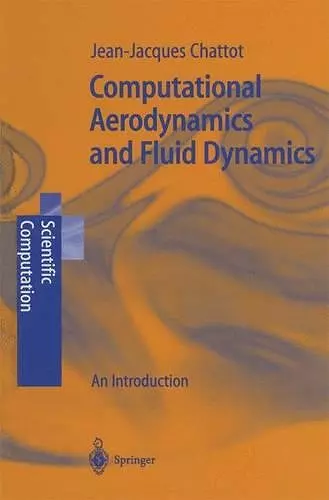Computational Aerodynamics and Fluid Dynamics
An Introduction
Format:Paperback
Publisher:Springer-Verlag Berlin and Heidelberg GmbH & Co. KG
Published:1st Dec '10
Currently unavailable, and unfortunately no date known when it will be back

Springer Book Archives
The objective of this book is to give the reader the basis for understanding the way numerical schemes achieve accurate and stable simulations of phy sical phenomena, governed by equations that are related, yet simpler, than the equations they need to solve.The field of computational fluid dynamics (CFD) has matured since the au thor was first introduced to electronic computation in the mid-sixties. The progress of numerical methods has paralleled that of computer technology and software. Simulations are used routinely in all branches of engineering as a very powerful means for understanding complex systems and, ultimately, improve their design for better efficiency. Today's engineers must be capable of using the large simulation codes available in industry, and apply them to their specific problem by implemen ting new boundary conditions or modifying existing ones. The objective of this book is to give the reader the basis for understanding the way numerical schemes achieve accurate and stable simulations of phy sical phenomena, governed by equations that are related, yet simpler, than the equations they need to solve. The model problems presented here are linear, in most cases, and represent the propagation of waves in a medium, the diffusion of heat in a slab, and the equilibrium of a membrane under distributed loads. Yet, regardless of the origin of the problem, the partial differential equations (PDE's) reflect the physical phenomena to be modeled and can be classified as being of hyperbolic, parabolic or elliptic type. The numerical treatment depends on the equation type that can represent several physical situations as diverse as heat conduction and viscous fluid flow. Non linear model problems are also presented and solved, such as the transonic small disturbance equation and the equations of gas dynamics.
From the reviews:
"Most of the book is classical, i.e. the author carries out a clear and concise review of finite difference methods (explicit and implicit) used to integrate initial and/or boundary value problems for ordinary and partial differential equations. [...] However, it is the appendix devoted to problems, which confers a distinctive position on this book in the CFD literature. The author works out in detail ten nontrivial problems in a very pedagogical manner." (Zentralblatt MATH, 1013, 2003)
"[...] a very well-written book. This reviewer recommends it highly for advanced undergraduate and first-year graduate classes. In addition, engineers and scientists interested in numerical simulation of fluid flow and plasma flow should find this an excellent self-study textbook." (Shi Tsan Wu, Applied Mechanics Reviews, 56/3, 2003)
"The objective of the textbook is to give the reader the basic knowledge in using numerical knowledge in using numerical methods for an accurate and stable simulation of physical phenomena in aerodynamics and fluid dynamics. The general idea of the book is to motivate the reader to write his own code and to use it in application. … The book is well suited for senior undergraduate, first year graduate students, and engineers who will be developing or using codes in CFD based on finite differences." (Lutz Tobiska, Mathematical Reviews, Issue 2004 d)
"The author carries out a clear and concise review of finite difference methods (explicit and implicit) used to integrate initial and/or boundary value problems for ordinary and partial differential equations. Practical aspects of the implementation of some selected schemes are also considered. … it is the appendix devoted to problems, which confers a distinctive position on this book in the CFD literature." (Calin Ioan Gheorghiu, Zentralblatt MATH, Vol. 1013, 2003)
"In this book, the author has documented his lecture notes on computational fluiddynamics (CFD) … . The most significant aspect of this book is that the author presents two appendices that include the problems and solutions, respectively. … Computational Aerodynamics and Fluid Dynamics: An Introduction is a very well-written book. This reviewer recommends it highly for advanced under-graduate and first-year graduate classes. In addition, engineers and scientists interested in numerical simulation of fluid flow and plasma flow should find this an excellent self-study book." (Shi Tsan Wu, Applied Mechanics Reviews, Vol. 56 (3), 2003)
ISBN: 9783642077982
Dimensions: unknown
Weight: unknown
194 pages
Softcover reprint of hardcover 1st ed. 2002